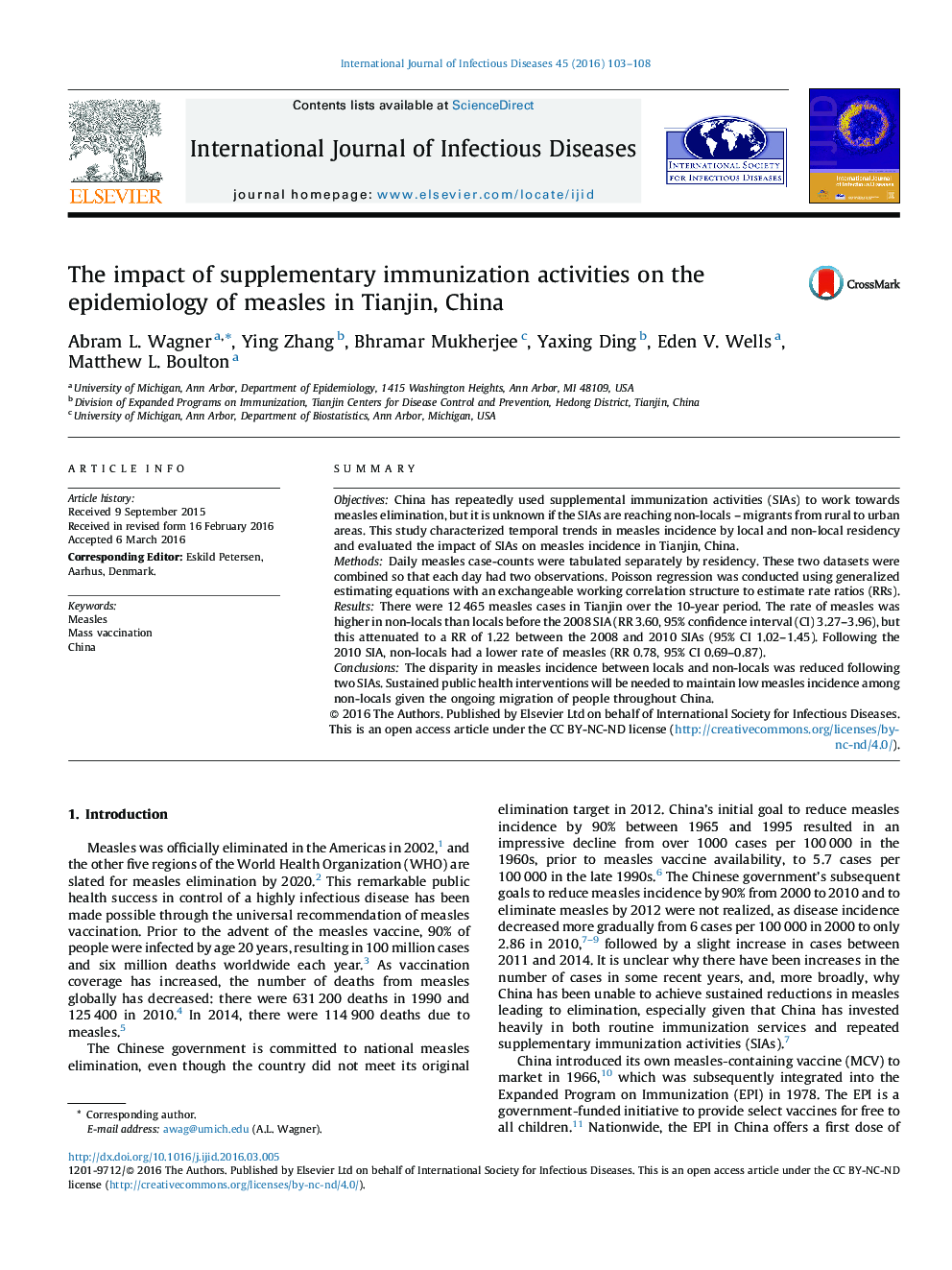| Article ID | Journal | Published Year | Pages | File Type |
|---|---|---|---|---|
| 3361758 | International Journal of Infectious Diseases | 2016 | 6 Pages |
•Non-locals in China may contribute to measles outbreaks because of their mobility.•The incidence of measles in locals and non-locals was compared using multilevel Poisson regression.•Before 2008, the rate of measles was higher in non-locals than locals (rate ratio 3.60).•Following two mass vaccination campaigns, non-locals had a lower rate of measles.
SummaryObjectivesChina has repeatedly used supplemental immunization activities (SIAs) to work towards measles elimination, but it is unknown if the SIAs are reaching non-locals – migrants from rural to urban areas. This study characterized temporal trends in measles incidence by local and non-local residency and evaluated the impact of SIAs on measles incidence in Tianjin, China.MethodsDaily measles case-counts were tabulated separately by residency. These two datasets were combined so that each day had two observations. Poisson regression was conducted using generalized estimating equations with an exchangeable working correlation structure to estimate rate ratios (RRs).ResultsThere were 12 465 measles cases in Tianjin over the 10-year period. The rate of measles was higher in non-locals than locals before the 2008 SIA (RR 3.60, 95% confidence interval (CI) 3.27–3.96), but this attenuated to a RR of 1.22 between the 2008 and 2010 SIAs (95% CI 1.02–1.45). Following the 2010 SIA, non-locals had a lower rate of measles (RR 0.78, 95% CI 0.69–0.87).ConclusionsThe disparity in measles incidence between locals and non-locals was reduced following two SIAs. Sustained public health interventions will be needed to maintain low measles incidence among non-locals given the ongoing migration of people throughout China.
